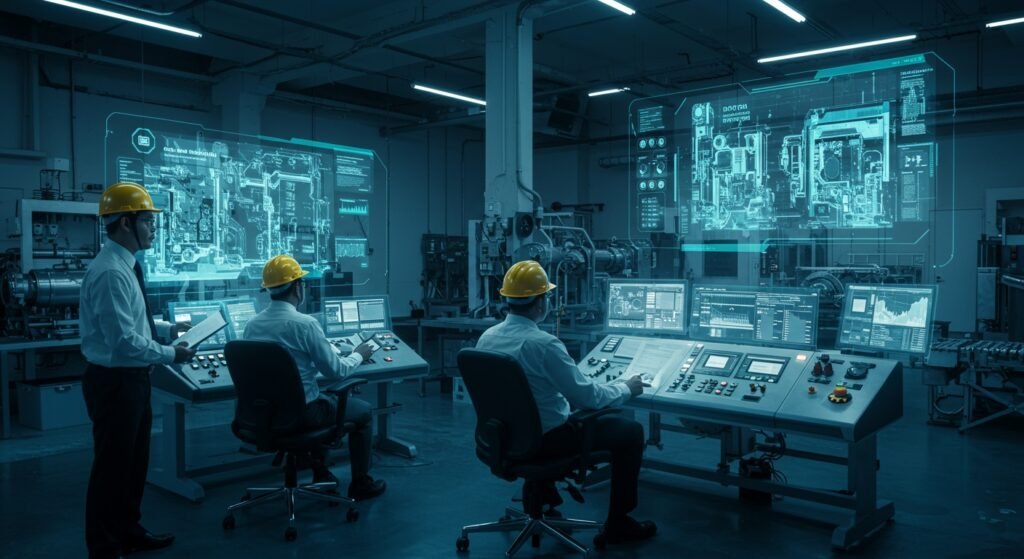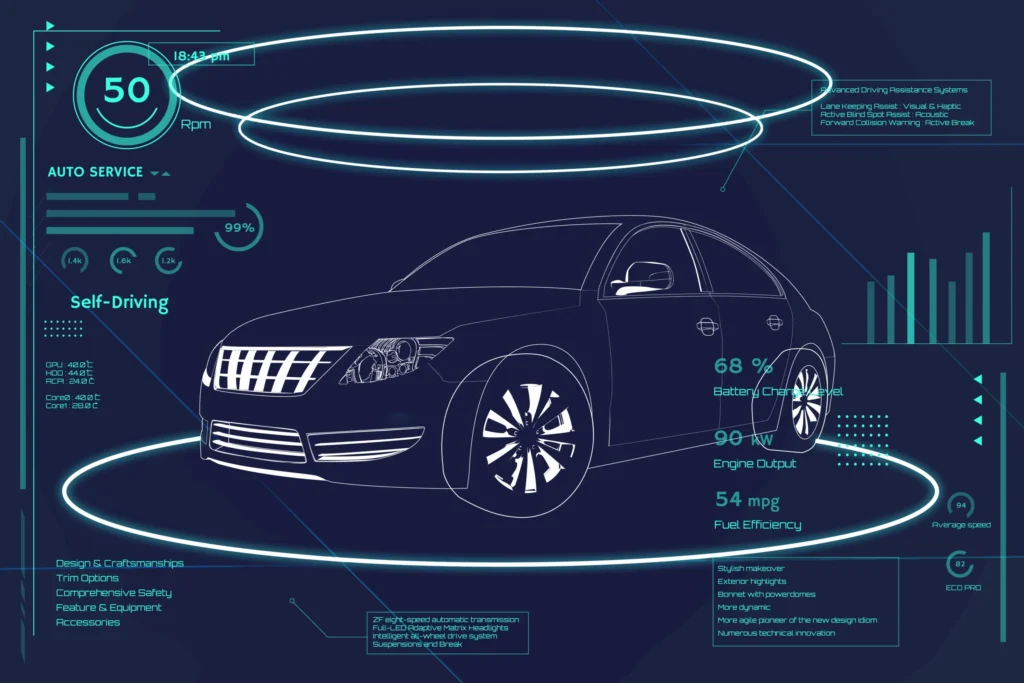Digital Twins in Industrial Systems: 7 Revolutionary Benefits
Digital Twins in Industrial Systems are revolutionizing how businesses operate, offering unprecedented insights and control over complex machinery and processes. By creating virtual replicas of physical assets, companies can simulate, analyze, and optimize performance in real-time, leading to significant advancements in efficiency and predictive capabilities.
This article explores the core concept of digital twins, their transformative power, key applications across various industries, and the challenges alongside the promising future outlook.
Table of Contents
- What are Digital Twins?
- The Transformative Power of Digital Twins in Industrial Systems
- Key Applications Across Industries
- Challenges and Future Outlook
What are Digital Twins?
A digital twin is a virtual model designed to accurately reflect a physical object, process, or system. The “twin” aspect refers to the fact that this digital replica is fed real-time data from its physical counterpart, allowing it to mimic its behavior, performance, and lifecycle. In industrial settings, this means a digital twin can represent anything from a single pump to an entire factory floor or even a supply chain. Sensors attached to the physical asset collect data on parameters like temperature, pressure, vibration, and performance metrics, which is then transmitted to the digital model. This continuous flow of information enables the digital twin to remain synchronized with its physical counterpart, providing an always up-to-date representation of its status. This goes beyond simple modeling; it’s a dynamic, living simulation.
The Transformative Power of Digital Twins in Industrial Systems
The adoption of Digital Twins in Industrial Systems is not just a technological upgrade; it’s a paradigm shift. These virtual models offer a profound impact on operational excellence, risk management, and strategic decision-making. Businesses leveraging digital twins gain a competitive edge by moving from reactive problem-solving to proactive optimization. They can test scenarios without interrupting physical operations, predict potential failures before they occur, and gain deep insights into asset performance that were previously unattainable. The ability to visualize and interact with complex systems virtually unlocks new levels of innovation and efficiency across diverse industrial sectors.
Enhanced Predictive Maintenance
One of the most immediate and significant benefits of digital twins is their ability to revolutionize maintenance strategies. By continuously monitoring the health and performance of physical assets, digital twins can predict when a component is likely to fail. This enables companies to switch from time-based or reactive maintenance to predictive maintenance, scheduling interventions precisely when needed. This approach significantly reduces unexpected downtime, extends the lifespan of machinery, and optimizes maintenance costs by ensuring resources are deployed efficiently.
Optimized Operational Efficiency
Digital twins provide a comprehensive, real-time view of operations, allowing industrial engineers and managers to identify bottlenecks, optimize processes, and improve throughput. They can simulate changes to production lines, adjust parameters, and experiment with different workflows in the virtual realm before implementing them physically. This iterative optimization process leads to substantial gains in efficiency, reduced waste, and improved overall productivity. For instance, a digital twin of a manufacturing plant can simulate various production schedules to find the most efficient one.
Improved Product Design and Prototyping
Before a physical product or system is even built, a digital twin can be created during the design phase. This allows engineers to virtually test, refine, and validate designs, identifying potential flaws or areas for improvement long before costly physical prototypes are made. This accelerates the design cycle, reduces development costs, and ensures a higher quality final product. For example, an automotive manufacturer might use a digital twin to simulate crash tests or aerodynamic performance.
Reduced Downtime and Costs
By predicting failures and optimizing maintenance schedules, digital twins drastically reduce unplanned downtime – a major cost driver in industrial operations. Furthermore, the ability to fine-tune processes and reduce resource consumption contributes directly to lower operational expenditures. The initial investment in digital twin technology often yields significant returns through these cost savings and efficiency gains.
Advanced Remote Monitoring
Digital twins allow for sophisticated remote monitoring of assets and processes from anywhere in the world. This is particularly valuable for distributed operations, hazardous environments, or facilities with limited on-site personnel. Experts can diagnose issues, provide guidance, and even perform virtual repairs using the digital twin, ensuring continuous operation and rapid response to anomalies.
Key Applications Across Industries
Digital twins are finding diverse applications across a multitude of industrial sectors, each leveraging the technology to address specific challenges and unlock new opportunities. From optimizing energy grids to ensuring the safety of oil rigs, their versatility is a key driver of adoption.
| Industry | Digital Twin Application Example | Benefit |
|---|---|---|
| Manufacturing | Simulating entire production lines | Optimized throughput, reduced bottlenecks |
| Energy | Monitoring wind turbines, power grids | Predictive maintenance, improved grid stability |
| Aerospace | Tracking aircraft engine performance | Enhanced safety, extended asset life |
| Healthcare | Modeling hospital operations, medical devices | Optimized patient flow, equipment uptime |
| Automotive | Designing and testing new vehicle components | Faster innovation, reduced prototyping costs |
Challenges and Future Outlook
While the benefits are clear, implementing digital twins is not without its challenges. Data integration, cybersecurity, and the need for specialized skills are significant hurdles. Companies must invest in robust data infrastructure and ensure the security of the vast amounts of real-time data flowing between physical and digital assets. Furthermore, attracting and training talent capable of designing, deploying, and managing these complex systems is crucial. For more insights on related industrial trends, visit our Industrial IoT Trends page.
Despite these challenges, the future of digital twins in industrial systems looks incredibly promising. As AI and machine learning capabilities advance, digital twins will become even more autonomous and predictive. The convergence with technologies like the Industrial Internet of Things (IIoT), 5G connectivity, and augmented reality (AR) will create increasingly sophisticated and immersive digital environments. We are moving towards a future where every significant industrial asset will likely have its own digital counterpart, driving unprecedented levels of efficiency, sustainability, and innovation. For an external perspective on industry trends, you might find this article on Forbes’ view on Digital Twin Technology insightful.


